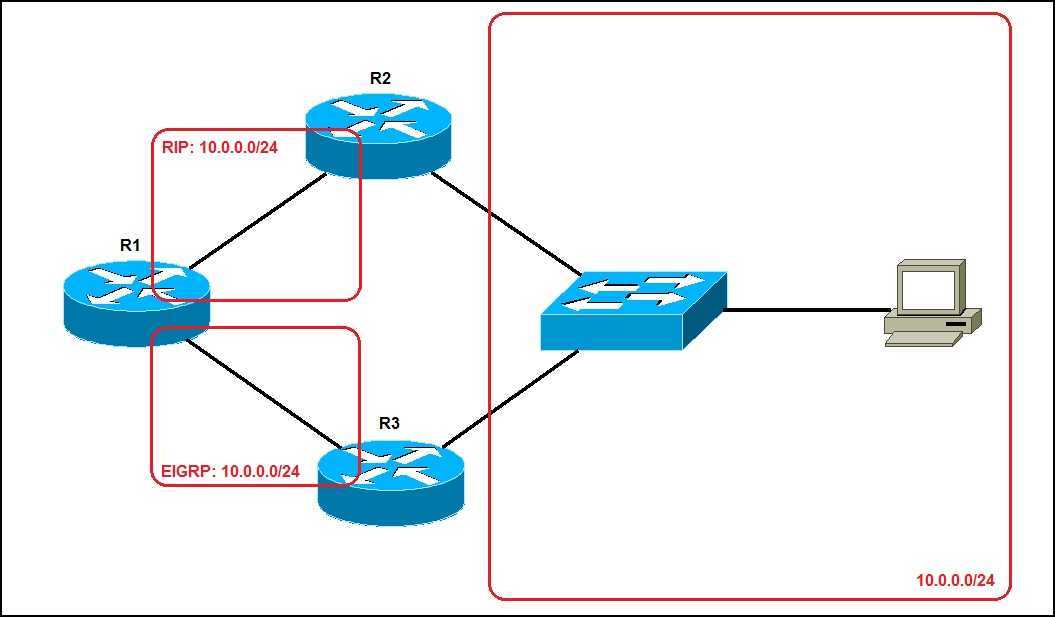Administrative distance (AD) explained
The administrative distance (AD) is a number used to rate the trustworthiness of the routing information received from a neighbor router. It is used when a router must choose between routes learned using different routing protocols. Each routing protocol has a default AD value. The route learned using the routing protocol with a lower AD number will be placed in the routing table.
An administrative distance is a number between 0 and 255, with the lower number being better. The AD of 0 indicates the most trusted route (the directly connected network). The AD of 255 means that the route will not be trusted.
Here are the default AD values for a different routing protocols:
- Connected interface – 0
- Static route – 1
- EIGRP – 90
- OSPF – 110
- RIP – 120
- External EIGRP – 170
- Unknown – 255
Consider the following example:
In the picture above you can see the network 10.0.0.0/24 is connected to R2 and R3. Both R2 and R3 are running routing protocols, R2 runs RIP, and R3 runs EIGRP. Both routers advertise the network 10.0.0.0/24 to R1. Since EIGRP has an administrative distance of 90 and RIP has an AD of 120, R1 will place the route from R3 in its routing table (remember, the lower AD number indicates a better route). R1 will send all packets destined for the 10.0.0.0/24 route to R3.




